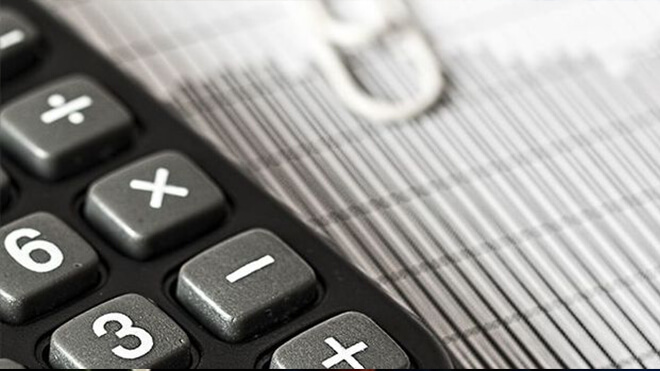
Guide to 2021 Child Tax Credit: Amounts, Eligibility
The IRS sent half of the Child Tax Credit to eligible families in monthly installments during the second half of 2021. This benefit applied to the 2021 tax year.
Editor's note: The following article is about the 2021 Child Tax Credit. Like many pandemic-related stimulus payments and expanded tax credits, this Child Tax Credit expired after the 2021 tax year. If you're looking for information about how to file your taxes in 2024, check out 2023 Income Taxes: What You Need To Know.
If you have kids and you file taxes, the Internal Revenue Service might have sent you monthly payments starting in July until the end of 2021.
It wasn't leftover stimulus money, and it wasn't remnants of your 2020 tax refund. These were part of the 2021 expanded Child Tax Credit.
Read on to find out if you were eligible to receive these payments, how much you were eligible to receive and how you can get the tax credit due to you.
Did everyone with kids receive payments?
No, not everyone. Whether you received advance payments depended on the age of your children, where you lived, and if you claimed the credit on either your 2019 or 2020 return. It also depended on your income. If you were eligible for advance payments, the first step to receiving them was filing your 2020 tax return because the IRS used information such as your address and deposit method from that return to get payments to you.
If you learned you were eligible but didn't get the Child Tax Credit when you filed your 2021 taxes, you might still be able to claim it. The IRS usually gives taxpayers three years from the date they filed the original return to claim a refund, using Form 1040X. So if you filed your taxes in April 2022, you'd have until April 2025 to amend your return.
Qualifying Children
Families may have been eligible if their child was a U.S. citizen with a social security number and was 18 or younger by the end of 2021. Families with full-time college students through age 24 may also have been eligible for advance payments. (Check out the IRS FAQ for conditions and exceptions if you want more details.)
Eligible children in your care could include your child, stepchild, adopted child, foster child, sibling, half-sibling, stepsibling or a descendent of any of them if they are under age 17 and younger than you. You may be able to claim children who aren't related to you in any of these ways under the rules for dependent qualifying relatives (PDF).
Income Limits
Eligibility was also based on your adjusted gross income. If you had a qualifying child in 2021 and made more than these amounts, your total payment would have been reduced by $50 for every $1,000 of income:
- $75,000 if you are a single tax filer.
- $112,500 if you file as head of household.
- $150,000 if you file jointly with your spouse.
Location Limits
If you had qualifying children and income within the limits in 2021, you're eligible if you lived in one of the 50 U.S. states or Washington, D.C., for more than half the year. Your main home could have been any location where you lived for more than half the year, including a house, apartment, mobile home, shelter, temporary lodging or other location, and it didn't need to be the same location.
I'm eligible. How much will I receive?
The maximum Child Tax Credit payment was $3,600 for each qualifying child up to age 5, and $3,000 for each child age 6-17.
Half of the total amount came as six monthly payments, so for each child up to age 5, you would have received six payments of up to $300, and for each child age 6-17, you would have received six monthly payments of up to $250. You'll claim the other half of the credit when you file your 2021 taxes, due April 18, 2022: Up to $1,800 for each child up to age 5, and up to $1,500 for each child age 6-17.
If you had dependents who were 18 years old or full-time college students through age 24, the IRS should have sent you a one-time payment of $500.
If your child changed age groups before the end of 2021, the IRS considers the child in the older group. CNET gives this example: If your 5-year-old turned 6, your maximum payment would be $3,000, and if your 17-year-old turned 18, you would receive $500.
CNET offers a calculator for you to estimate how much you were eligible to receive.
We had a baby last year. How would the IRS have known to send us payments?
If you didn't update your status in the IRS Child Tax Credit Update Portal in 2021, you will have to wait until you file your tax return this year (in 2022) to receive the payment as a lump sum.
I've claimed the Child Tax Credit before. Is this more than usual?
Yes. In 2020, the Child Tax Credit was $2,000 per qualifying child. The 2021 credit was expanded as part of the American Rescue Plan.
What did I have to do to receive the monthly payments?
In most cases, nothing, as long as you filed your 2020 tax return. The IRS likely sent your payment according to the credit union account or bank account information you have on file. If you received a refund or the last stimulus payment, your Child Tax Credit payment would go to the same account.
If you had eligible children and income and lived in the U.S. for more than half the year, but you weren't required to file a tax return, you would have had to use the IRS non-filers tool to enter basic information the IRS needs to send your payments.
The fastest way to receive payments was by direct deposit to your financial institution. You could also have received payments by prepaid debit card or on a mobile payment app.
You can check to see if you were enrolled to receive advance payments on the IRS Child Tax Credit Update Portal. You can also update your credit union account or bank account information if, for example, you changed to a different credit union or bank.
What were the payment dates?
The IRS issued six monthly Child Tax Credit advance payments on these dates:
- July 15, 2021
- Aug. 13, 2021
- Sept. 15, 2021
- Oct. 15, 2021
- Nov. 15, 2021
- Dec. 15, 2021
If the IRS Child Tax Credit Update Portal shows the IRS issued payment but you didn't receive them, you can request that the IRS track it for you.
What if I earned too much but the IRS sent me payments anyway? Will I have to pay them back?
You might. The IRS based your 2021 Child Tax Credit on your 2019 or 2020 income information. If your income went up in 2021 because, for example, you got a new job, you might want to check whether you're still eligible. If not, but you received payments, it might just mean a reduced second-half payment when you file your tax return.
If the monthly payments you received total more than you are eligible for, you'll owe the IRS as part of your tax payment when you file your 2021 taxes.
If you didn't know for sure and you didn't want to risk having to pay it back, you had an option to unenroll in the advance payments on the IRS Child Tax Credit Update Portal. If it turns out you qualified after all, you'll receive a lump sum payment after you file your 2021 tax return. If you didn't qualify, you won't receive a payment.
I don't have full custody of the kids. Can I still claim the credit?
You can claim the child tax credit if the parent with custody agrees. If the noncustodial parent claims the Child Tax Credit, the custodial parent can't and vice versa. The IRS has a special rule for divorced or separated parents (PDF) that explains who qualifies and how this works.
If you have split custody and claimed the Child Tax Credit in 2020, but you won't claim it for 2021, the IRS might have sent you advance payments that you'll have to pay back. To prevent this problem, you may have chosen to opt out of receiving the advance payments on the IRS Child Tax Credit Update Portal. If that's the case, then you can file your taxes as usual this year (in 2022), and the other parent can receive the credit as a lump sum.
I don't have a home but I'm otherwise eligible. Could I still receive the credit?
Yes. People who are experiencing homelessness can claim the Child Tax Credit. The first step is to be sure you file your 2021 taxes with an alternate address — the address of a friend, relative, or trusted service provider like a shelter, drop-in day center or transitional housing program. If you can't choose direct deposit, the IRS will send a check or debit card to this address.
More Information
The IRS has a number of FAQs, tools and fact sheets on its website. Here are a few resources:
- Advance Child Tax Credit Payments in 2021
- FAQ: General Information
- FAQ: Eligibility for Advance Child Tax Credit Payments and the 2021 Child Tax Credit
- FAQ: Calculation of the 2021 Child Tax Credit
- List of IRS 2021 Child Tax Credit FAQs
Non-filers can sign up using this tool: Child Tax Credit Non-Filer Sign-Up Tool
The above article is intended to provide generalized financial information designed to educate a broad segment of the public; it does not give personalized tax, investment, legal, or other business and professional advice. Before taking any action, you should always seek the assistance of a professional who knows your situation for advice on taxes, your investments, the law, or any other business and professional matters that affect you and/or your business.


